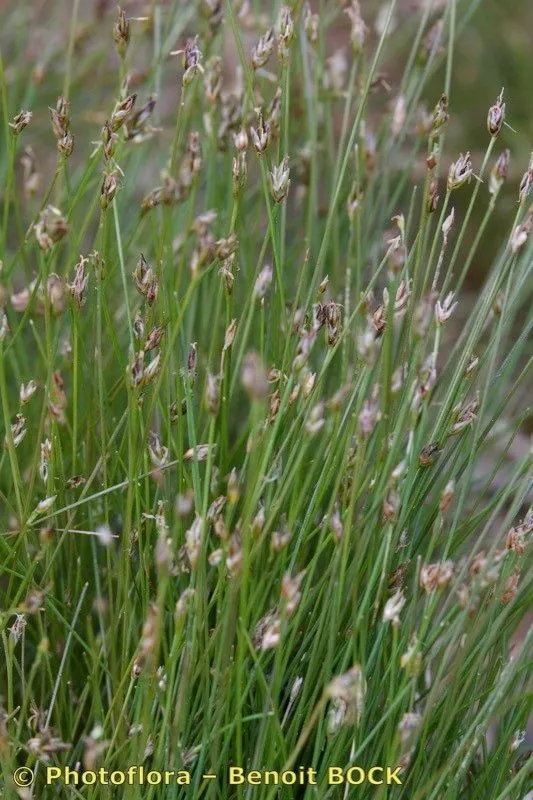
Author: (L.) Roem. & Schult.
Bibliography: Syst. Veg., ed. 15 bis 2: 154 (1817)
Year: 1817
Status: accepted
Rank: species
Genus: Eleocharis
Vegetable: False
Observations: Temp. Northern Hemisphere to W. South America
Needle spike-rush, scientifically known as Eleocharis acicularis, is a fascinating and adaptable plant belonging to the Cyperaceae family. First documented in 1817 in the “Syst. Veg., ed. 15 bis 2”, this species was classified by botanists Johann Jakob Roemer and Josef August Schultes, whose work brought this unique plant to the scientific community’s attention.
Eleocharis acicularis can be found across a broad geographical range, highlighting its adaptability to various environments. Predominantly thriving in temperate regions of the Northern Hemisphere, it extends its reach to western parts of South America, demonstrating a remarkable versatility.
The physical characteristics of needle spike-rush include slender, needle-like stems that give the plant its common name. These fine stems are typically green and can vary in length, forming dense clusters that are often found in wetland habitats such as marshes, ponds, and along the edges of lakes and rivers. Their fine, hair-like appearance makes them easily identifiable in their natural settings.
One of the most intriguing aspects of Eleocharis acicularis is its ability to thrive in both aquatic and semi-aquatic environments, providing crucial ecological benefits. This plant plays an essential role in stabilizing soil and sediment in wetland areas, helping to prevent erosion. Additionally, it offers habitat and nourishment to a variety of wildlife, from small invertebrates to larger aquatic species, thereby contributing to the biodiversity of its ecosystems.
In cultivation, needle spike-rush is often used in aquascaping for planted aquariums and aquatic gardens due to its attractive, grass-like appearance and ease of care. It can adapt to different water conditions and lighting levels, making it a popular choice for hobbyists seeking to create naturalistic underwater landscapes.
Overall, needle spike-rush (Eleocharis acicularis) is a remarkable plant, not only for its delicate beauty but also for its ecological significance and adaptability across a vast range of habitats. Whether observed in its natural wetland settings or cultivated in an aquarium, this plant continues to captivate and contribute to its environment in numerous ways.
Eng: dwarf hair-grass, needle spike-rush, needle spikerush, least spikerush
Deu: nadel-sumpfbinse, nadel-sumpfsimse, nadelried
Dan: nåle-sumpstrå
Spa: hierba pilosa, junco de espiga, pasto de agua, velita
Nld: naaldwaterbies
Swe: nålsäv
Fra: scirpe épingle, éléocharide aciculaire, héléocharis épingle, souchet épingle
Sme: sáigoluikket
Cym: clwpfrwynen leiaf, sbigfrwynen leiaf, ysbigfrwynen fain
En: Needle spike-rush, Dwarf hair-grass, Needle spikerush, Least Spikerush, Needle spikesedge
Ca: Eleòcaris
Da: Nåle-sumpstrå
Nl: Naaldwaterbies
Fr: Scirpe épingle, Héléocharis Épingle, Éléocharide aciculaire, Souchet épingle
De: Nadel-Sumpfsimse, Nadel-Sumpfbinse, Nadelried, Nadel-Sumpfried, Nadelbinse
It: Giunchina aghiforme
Se: Sáigoluikket
Es: Junco de espiga, Hierba pilosa, Pasto de agua, Velita
Sv: Nålsäv
Cy: Clwpfrwynen Leiaf, Sbigfrwynen Leiaf, Ysbigfrwynen Fain
Taken Aug 15, 2004 by Photoflora – Benoit BOCK (©)
Taken Aug 21, 2008 by Tela Botanica − Mathieu MENAND (cc-by-sa)
Taken Sep 15, 2013 by Photoflora – Benoit BOCK (©)
Taken Aug 15, 2004 by Photoflora – Jean-Luc TASSET (©)
Taken Oct 6, 2021 by Miri B (cc-by-sa)
Taken Aug 27, 2022 by Jean-Marc Vanel (cc-by-sa)
Taken Aug 3, 2021 by alain croibien (cc-by-sa)
Taken Jun 3, 2020 by CarrascoVet (cc-by-sa)
Taken Jul 26, 2020 by alain croibien (cc-by-sa)
Taken Jul 15, 2005 by Photoflora – Benoit BOCK (©)
Taken Aug 15, 2004 by Photoflora – Benoit BOCK (©)
Taken Aug 15, 2015 by Photoflora – Benoit BOCK (©)
Taken Aug 15, 2015 by Photoflora – Benoit BOCK (©)
Taken Aug 15, 2014 by Photoflora – Jean-Luc TASSET (©)
Taken Aug 15, 2019 by Photoflora – Benoit BOCK (©)
Taken Jul 19, 2012 by Tela Botanica − David MERCIER (cc-by-sa)
Taken Jan 1, 1970 by Photoflora – L’Abbé COSTE (©)
© copyright of the Board of Trustees of the Royal Botanic Gardens, Kew.
© copyright of the Board of Trustees of the Royal Botanic Gardens, Kew.
Growth form: Rhizomatous
Growth habit: Graminoid
Growth rate: Moderate
Ph maximum: 7.0
Ph minimum: 4.5
Light: 7
Atmospheric humidity: 9
Soil nutriments: 2
Family: Myrtaceae Author: (F.Muell.) K.D.Hill & L.A.S.Johnson Bibliography: Telopea 6: 402 (1995) Year: 1995 Status:…
Family: Rubiaceae Author: Pierre ex A.Froehner Bibliography: Notizbl. Bot. Gart. Berlin-Dahlem 1: 237 (1897) Year:…
Family: Sapindaceae Author: Koidz. Bibliography: J. Coll. Sci. Imp. Univ. Tokyo 32(1): 38 (1911) Year:…
Family: Asteraceae Author: A.Gray Bibliography: Pacif. Railr. Rep.: 107 (1857) Year: 1857 Status: accepted Rank:…
Family: Fabaceae Author: Medik. Bibliography: Vorles. Churpfälz. Phys.-Ökon. Ges. 2: 398 (1787) Year: 1787 Status:…
Family: Aspleniaceae Author: (Cav.) Alston Bibliography: Bull. Misc. Inform. Kew 1932: 309 (1932) Year: 1932…